First Lieutenant Bernard C. Harlow
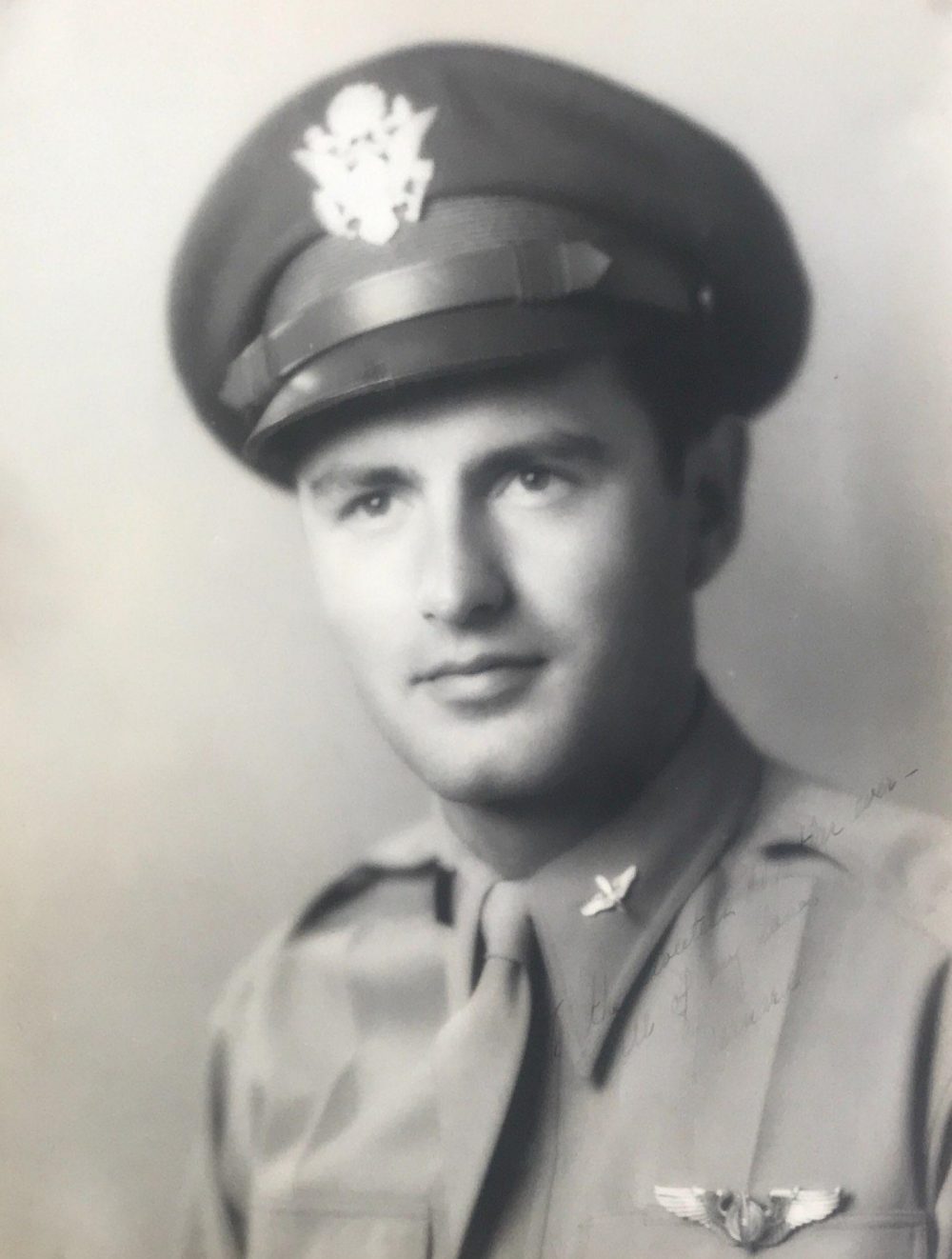
- Service Number: 13035785, O-733561
- Date of Birth: January 24, 1918
- Entered the Military: January 23, 1942
- Date of Death: April 4, 1944
- Hometown: Charlottesville, Virginia
- Place of Death: Eniwetok, Marshall Islands
- Award(s): Distinguished Flying Across, Air Medal, Purple Heart
- Cemetery: Courts of the Missing, Court 7. National Memorial Cemetery of the Pacific, Honolulu, Hawai'i
Mentored by Mrs. Elizabeth Mulcahy
Western Albemarle High School
2020-2021
Early Life
Bernard Harlow was born on January 24, 1918, in Charlottesville, Virginia. Harlow’s father, Henry C. Harlow, worked as a caretaker and farm manager, while his mother, Alice Morris, only 19 at the time of his birth, made extra earnings driving the milk truck. Harlow had a younger brother and an older brother, and three substantially older half-siblings from his father’s previous marriage, all living in the same household.
Bernard attended Meriwether Lewis High School in Ivy, Virginia, and later graduated from Jefferson Business College in 1937. He worked as a bookkeeper at the Charlottesville People’s National Bank from September 1937 to March 31, 1942. From January 23, 1942, to November 20, 1942, Harlow trained as an aviation cadet with the U.S. Army Air Forces and his younger brother James.
Three of Bernard’s brothers were all Army airmen. First Lieutenant James Elmer Harlow, the youngest of the Harlows boys, was part of the 91st Bombardment Group. He flew over 25 combat missions while stationed in England and earned air medals for his service. James later served in the Korean and Vietnam Wars and retired as a lieutenant colonel.
Bernard’s older brother, Henry Maynard Harlow (known as Maynard), part of the 19th Bombardment Group, flew a total of 54 combat missions in the Pacific Theatre, survived the war, and served for another two decades until he passed away in 1976. He was also the famous Swamp Ghost aircraft co-pilot, preserved today at the Pearl Harbor Aviation Museum. Maynard graduated from the University of Virginia, where President Franklin D. Roosevelt delivered the famous “dagger” speech at the 1940 commencement address. He was also the captain of the University of Virginia boxing team and the National Intercollegiate Junior Middleweight Champion of the USA in 1938.
The oldest of the Harlow fliers, Frank J. Harlow, served as a staff sergeant and later died in 1974 in Charlottesville, Virginia.
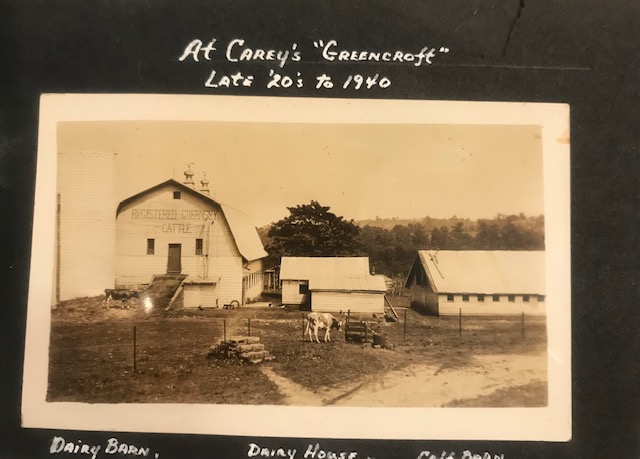
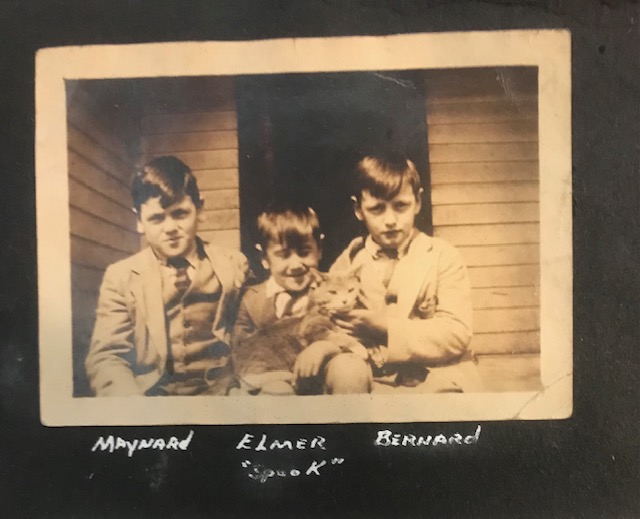
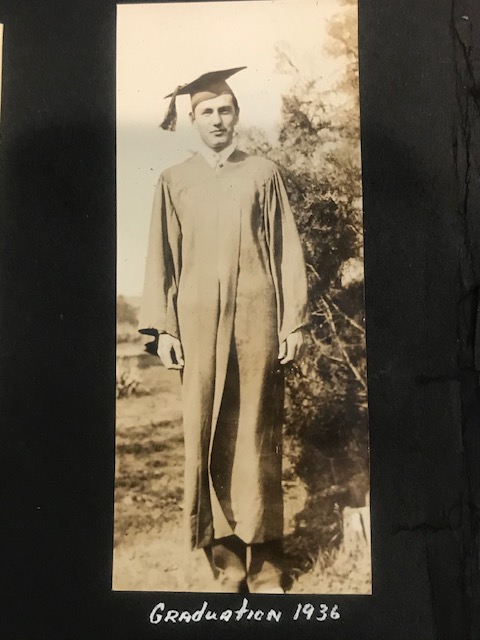
Homefront
Before being drafted into the United States Army Air Forces on January 23, 1942, Harlow worked at a local bank in Charlottesville, Virginia. Charlottesville is a part of Albemarle County, home to historic landmarks including Thomas Jefferson’s Monticello, James Monroe’s Highland, and the Rotunda at the University of Virginia. The University of Virginia School of Medicine served as an important emergency base hospital that received more seriously wounded casualties and hosted many events during World War II, including music, plays, and movies.
Formed by World War I veterans on June 8, 1940, Charlottesville boasted one of the first local defense councils in the nation. In January 1941, Virginia established a new state militia, the Virginia Protective Force, in case the president deputized the state’s National Guard for federal service. The force disbanded in 1947, two years after World War II ended.
Fort Belvoir in Fairfax, Virginia, about 100 miles northeast of Charlottesville, served as a major training site for the United States Army Engineers. Around 140,000 engineers trained at the facility during World War II. The Pentagon, the United States Department of Defense’s headquarters, was also completed between September 1941 and January 1943 in Arlington, Virginia.
Although a small town, many young men from the air served in the U.S. military. On D-Day (June 6, 1944) Bedford lost 19 men, making it most likely the largest per capita loss of any town in the United States on that day.
In total, around 300,000 Virginians served in the military in World War II. About 186,000 came from Virginia farms. Virginia farmers made exceptional contributions and sacrifices for the war effort. From 1940 to 1945, more than 100,000 Virginia farmers engaged in either the U.S. armed services or wartime industries. The rest increased production tremendously, with an average of 25 percent increase per farmer. Besides agricultural products, state dairy production also increased from 1935 to 1939. There was an 82 percent increase in the production of evaporated and condensed milk. Monticello Dairy in Charlottesville, Harlow’s hometown, also contributed to this significant production increase. However, with the outbreak of war in 1940, dairy farmers lost many workers from the draft and war industry employment. With the help of women, children, and older workers, Virginia dairymen met their wartime production goals.
Farm families in Virginia also collected scrap metals to contribute to the war efforts. According to the 1943 Virginia State Salvage Committee records, Virginia farmers contributed around 181,500 tons of scrap iron and steel.
Victory gardens and statewide food conservation programs were also important during World War II. The dehydration of food was promoted in order to prolong the preservation of food, and electric dehydrators could often be found in Virginia homes. Virginians also created food conservation committees in each county that taught people how to produce, can, and dry more food.
Military Experience
The Seventh Air Force was a United States Army Air Forces combat unit in the Pacific Theatre in World War II. It was established on October 19, 1940, as the Hawaiian Air Force at Fort Shafter in Honolulu, Hawai’i and re-designated as the Seventh Air Force on February 5, 1942. It consisted of two commands: the 18th Bombardment Wing at Hickam Field and the 14th Pursuit Wing at Wheeler Field. In July 1941, the headquarters moved to Hickam Air Field, Hawai’i, next to the United States Naval Station Pearl Harbor. In 2019, the two merged, becoming Joint Base Pearl Harbor-Hickam.
Hobbs Army Airfield Training
Hobbs Army Airfield was a U.S. Army Air Forces training center in Hobbs, New Mexico. The construction of the airfield began soon after the Pearl Harbor attack in December 1941. It started as a bombardier school on September 9, 1942, with the arrival of 20 instructors and 80 cadets, which likely included Bernard Harlow. On November 21, 1942, the first and only class of bombardiers graduated. Soon after, the airfield became a specialized four-engine pilot transition school.
Harlow left Hobbs in April 1943 to join the Seventh Air Force in the central Pacific as a bombardier. During World War II, U.S. bombers used a device called the Norden Bombsight to target aerial bombs. They fixed the crosshairs on the target and made sure the aircraft did not drift as the bombs dropped.
The 11th Bombardment Group
Harlow joined the 11th Bombardment Group, which activated on February 1, 1940, at Hickam Field and served with 18th Bombardment Wing. However, from July 1942 to March 1943, the group transferred under the Thirteenth Air Force’s command. It transferred back to Seventh Air Force shortly before Harlow joined. The group soon received the consolidated B-24 Liberator bomber, which they flew until the end of the war. With the B-24 Liberators, the group flew combat missions against Japanese bases in the Central Pacific. On November 9, 1943, the group, stationed on Ellice Island (modern-day Tuvalu) joined with the 26th, 42nd, 98th, and 431st Bomber Squadrons to participate in an Allied offensive through the Gilbert, Marshall, and Mariana Islands.
As part of the 26th Bomber Squadron, Lieutenant Harlow earned a Distinguished Flying Cross and an Air Medal after completing five or more aerial combat missions against the Japanese. On March 16, 1944, an informal ceremony was held at the advanced Seventh Army Air Force base minutes after Harlow had returned from a combat mission. Lieutenant Harlow and his crew members were very effective in concentrated bombing and strafing attacks, which are ground target attacks with low-flying aircraft. As a result, no hostile aircraft threatened the U.S. Navy task force that later landed in Kwajalein Atoll, an island in the Marshall Islands. After the victory over the Gilbert Islands in 1943, the Allies set their sites on the Marshall Islands as their next step towards Japan.
Many scattered atolls make up the Marshall Islands, which became a Japanese mandate after World War I. In January 1944, Admiral Chester W. Nimitz decided to focus on one atoll, Kwajalein. To support the landings in the Marshall Islands, Nimitz ordered a series of day and night air attacks on the Japanese at Truk, an atoll northeast of New Guinea, in February 1944. The Truk raids destroyed 275 Japanese aircraft and sank 200,000 tons of merchant shipping; they were among the most successful of the war.
On April 4, 1944, Lieutenant Harlow’s aircraft, with ten crew members led by Captain Allan Taflinger, took off from Eniwetok Airfield on a night bombing mission against Truk. The crew’s last contact was ten miles northeast of Dublon Island, Truk Atoll. They broke formation to attack their target. First Lieutenant Hayden Weaver from the 26th Bombardment Squadron stated the aircraft had been flying north, paralleling the reef of Truk Atoll, when it collided with an enemy plane and exploded. Captain Taflinger’s crew were declared Missing in Action.
On February 15, 1946, the entire crew was declared dead and awarded the Purple Heart. However, it is uncertain the date and the cause of their death. Captured Japanese documents indicated that Lieutenant Van Metre, another member of Captain Taflinger’s air crew, was a prisoner of war at Truk. It is known that ten American airmen were executed on Truk during 1944. However, only two killed on July 20, 1944, may have been from Harlow’s crew. There was not sufficient evidence to issue an official report.
Lieutenant Harlow’s name is listed on the Honolulu Memorial at the National Memorial Cemetery of the Pacific.
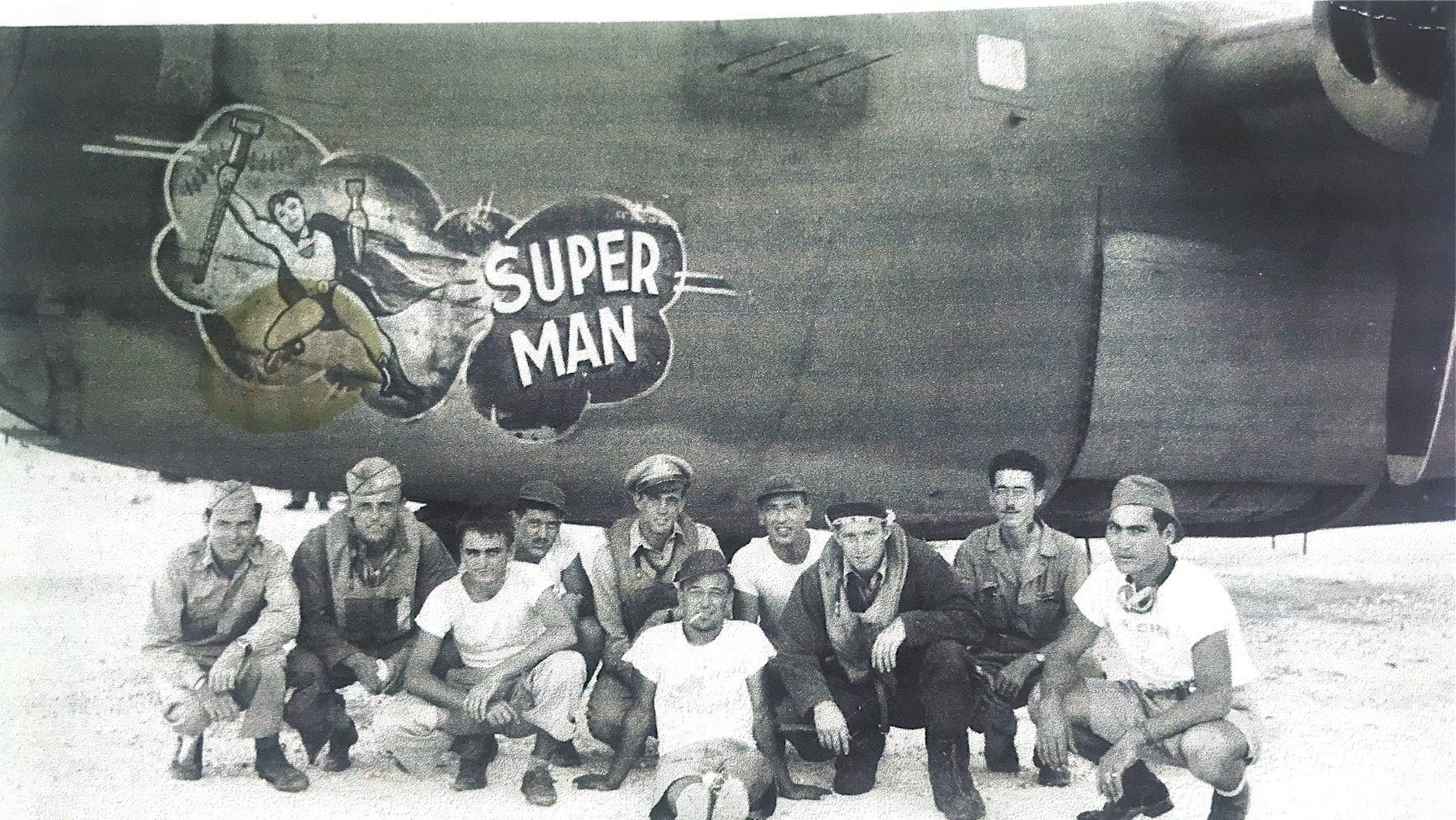
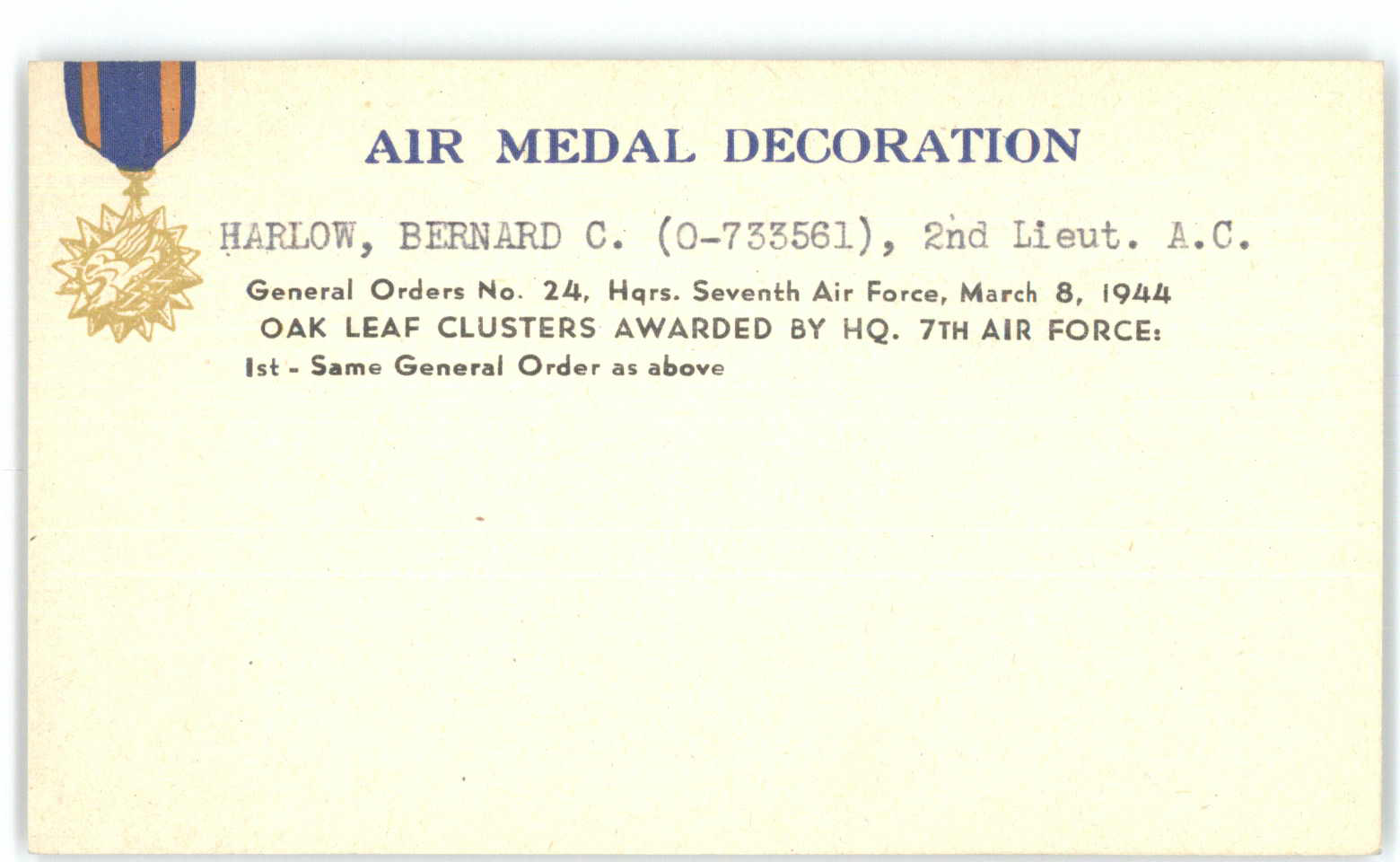
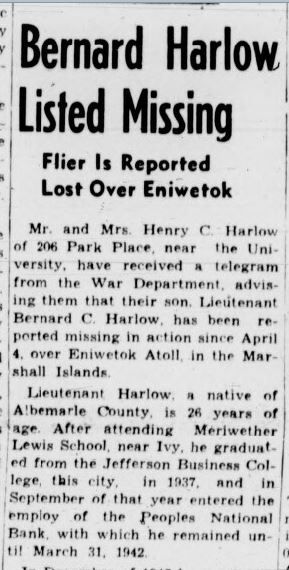
Eulogy
In a small, rural town, a young man’s world turned upside down. From a bookkeeper to a bombardier, Lieutenant Bernard Harlow experienced incredible challenges and turmoil in his short yet meaningful life.
After enlisting, Lieutenant Harlow trained at Hobbs Army Airfield. In November 1942, he graduated as a member of the first and only class of bombardiers from the Hobbs Army Airfield before the airfield became a specialized four-engine pilot transition school. Lieutenant Harlow joined the 11th Bombardment Group, which activated in February 1940 at Hickam Field. The unit fought in the Pacific Theatre, working to push back Japanese forces in the area.
On April 4, 1944, Lieutenant Harlow’s aircraft, with ten crew members led by Captain Allan Taflinger, took off from Eniwetok Airfield on a night bombing mission against Truk. Witnesses reported it exploded in midair after a collision with an enemy plane. Captain Taflinger’s crew were declared Missing in Action.
The entire crew was declared dead and awarded the Purple Heart. Unfortunately, it is uncertain the date and the cause of their death. However, Lieutenant Harlow and his crew are not forgotten. The sacrifice of these men, along with countless others who continued their mission, led to the eventual Allied victory in the Pacific Theatre.
Lieutenant Harlow is memorialized on the Honolulu Memorial at the National Memorial Cemetery of the Pacific among many Silent Heroes who have sacrificed their lives for the Allied victory in World War II. Fifteen years after his incident, Lieutenant Harlow’s mother applied for a headstone in his hometown Charlottesville, Virginia, at the Monticello Memorial Park. Thank you, Lieutenant Harlow, for your service and sacrifice.
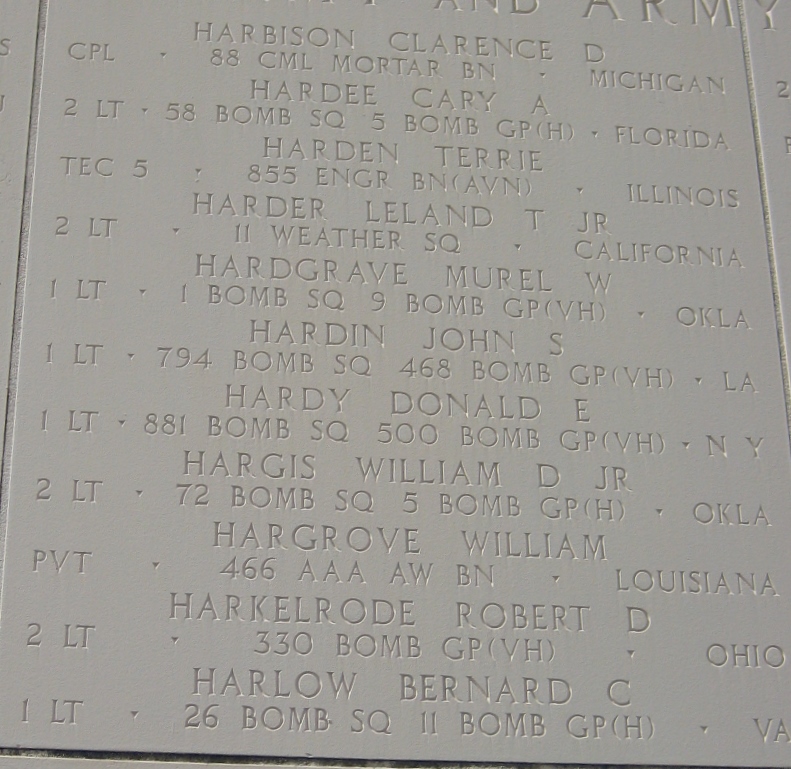
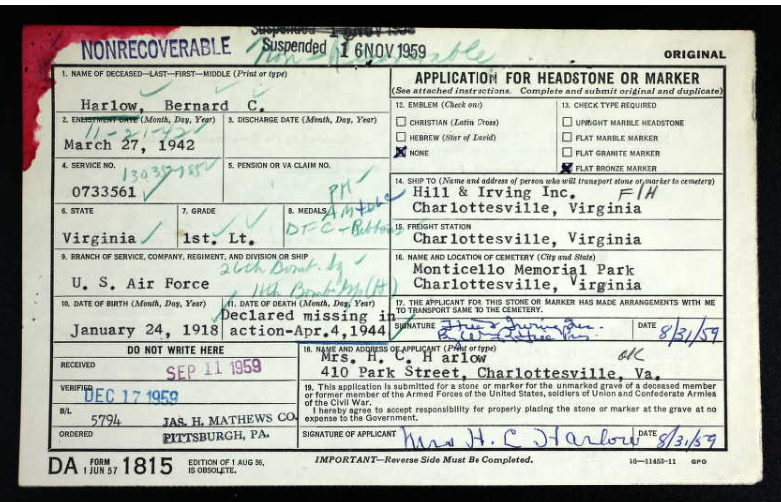
Reflection
It has been a true honor and privilege to be part of the Sacrifice For Freedom®: World War II in the Pacific program over the past two years. Aside from learning history through various methods and researching Lieutenant Bernard Harlow, I met incredible people and formed life-long friendships.
The program allowed me to not only understand World War II history in the broader context through the many informative readings and engaging discussion modules but also appreciate the tremendous sacrifices so many individual Silent Heroes made during the War and throughout history. As I continue to learn more about Lieutenant Harlow, his family, and his military experiences, I feel more responsible for telling his story. Throughout the research process, I realized that Lieutenant Harlow, among many other young and unmarried servicemen, was especially prone to be forgotten and left behind. For over a year, I could not find a photograph of him. However, a brilliant historian, who later captivated us in Oahu with her passionate tours and stories, selflessly devoted her time to help me find Lieutenant Harlow’s extended family members. When I finally saw a picture of him over a year after my initial research, I was moved beyond words.
At Pearl Harbor and Hickam Field, I experienced traveling back in time with incredible historians who gave voices and life to those who fought and sacrificed in the exact places where I stood. Suddenly, the stories, readings, and research from the past year all came to life in vivid images before my eyes. I felt truly a part of the history and legacy of World War II. Understanding the importance and power of location in learning history also inspired me to look at historical sights in Virginia. From Jamestown to Bedford, history is all around me. I hope to integrate location in my learning from my hometown to all around the world.
The last morning at the National Memorial Cemetery of the Pacific was the most impactful ending to a perfect week. Listening to my peers memorialize their personal Silent Heroes connected history to hearts, souls, and names that I now know. As I gave my eulogy, I felt immense gratitude and pride in telling Lieutenant Harlow’s story. A story of sacrifice and honor that I will not forget.
Bibliography
Primary Sources
“Bernard Harlow Listed Missing.” The Daily Progress (Charlottesville, VA), April 5, 1944.
Bernard C. Harlow. Air Medal Decoration. March 8, 1944. Records of the War Department, Army Air Forces (Record Group 64). National Archives and Records Administration (139444158). catalog.archives.gov/id/139444158.
Bernard C. Harlow. Headstone and Interment Records for U.S. Military Cemeteries on Foreign Soil, 1942-1949. ancestry.com.
Bernard C. Harlow. Headstone Applications for Military Veterans, 1925-1970. Digital Images. ancestry.com.
Bernard C. Harlow. Individual Deceased Personnel File. Department of the Army.
Bernard C. Harlow. Official Military Personnel File, Department of the Army, RG 319, National Archives and Records Administration – St. Louis.
Bernard C. Harlow. U.S. Rosters of World War II Dead, 19439-1945. Digital Image. ancestry.com.
Bernard C. Harlow. Virginia Birth Records, 1912-2015. Digital Images. ancestry.com.
Bernard C. Harlow. World War II Army Enlistment Records, 1938-1946. ancestry.com.
Bernard Coulter Harlow. World War II Draft Cards Young Men, 1940-1947. Digital Images. ancestry.com.
Bernard C. Harlow. World War II Military Personnel Missing in Action or Lost at Sea. ancestry.com.
Doker Family Photographs. Courtesy of Sue Doker.
Firpo, Sergeant Robert A. B24 of the 11th BG, 26th BS, Somewhere over the South Pacific. Photograph. 11th Bombardment Group Heavy (H) “The Grey Geese.” Accessed November 17, 2020. 11thbombgroup.org/photoswwii/firpo.html.
“The Headquarters of the United States War Department.” The New York Times, December 23, 1942.
Henry Harlow Family Photographs. Courtesy of Henry Harlow.
Records for Bernard C. Harlow; World War II Army Enlistment Records, 1938-1946 [Electronic File], Record Group 64; National Archives at College Park, College Park, MD [retrieved from the Access to Archival Databases at aad.archives.gov/aad/series-description.jsp?s=3360; December 2, 2020].
Truk Raid, East Caroline Islands, West Pacific. 1944. Film. Records of the Office of the Chief Signal Officer, 1860-1964 (Record Group 111). National Archives and Records Administration (17207). catalog.archives.gov/id/17207.
Virginia. Albemarle County. 1920 U.S. Census. Digital Images. ancestry.com.
Virginia. Albemarle County. 1930 U.S. Census. Digital Images. ancestry.com.
Virginia. Albemarle County. 1940 U.S. Census. Digital Images. ancestry.com.
Secondary Sources
“1Lt Bernard C. Harlow.” Find a Grave. Last modified August 6, 2010. Accessed October 3, 2020. www.findagrave.com/memorial/56109958/bernard-c-harlow.
“Bernard C. Harlow.” American Battle Monuments Commission. Accessed October 4, 2020. www.abmc.gov/decedent-search/harlow%3Dbernard.
“History.” U.S. Army Fort Belvoir. Last modified April 10, 2019. Accessed December 2, 2020. home.army.mil/belvoir/index.php/about/history.
“History of the 11th Bombardment Group in WW II.” 11th Bombardment Group Heavy (H) “The Grey Geese.” Accessed November 17, 2020. 11thbombgroup.org/historyofthe11thbg.html.
“History of the U.S. Army Air Corps in the Hawaii Department.” Hawaii Aviation. Accessed November 17, 2020. aviation.hawaii.gov/wp-content/uploads/2015/03/History-of-the-US-Army-Air-Corps-in-Hawaii-Dept.pdf.
“Journey through Time.” Historical Collections at the Claude Moore Health Sciences Library, University of Virginia. Last modified 2007. Accessed November 16, 2020. exhibits.hsl.virginia.edu/journey/1940s/.
Millgate, Helen. “James Elmer Harlow.” American Air Museum in Britain. Last modified March 13, 2020. Accessed October 3, 2020. www.americanairmuseum.com/person/107363.
“National D-Day Memorial.” Encyclopedia Virginia. Accessed June 1, 2021. encyclopediavirginia.org/entries/national-d-day-memorial/.
“Pacific War.” Britannica. Last modified December 2, 2019. Accessed November 24, 2020. www.britannica.com/topic/Pacific-War/The-Central-Pacific-Islands.
Price, Harvey Lee. Virginia Farmers at War. Blacksburg: Virginia Polytechnic Institute, 1950. Accessed November 17, 2020. hdl.handle.net/2027/uiug.30112106900001.
Schlegel, Marvin Wilson. Virginia on Guard; Civil Defense and the State Militia in the Second World War. Richmond: Virginia State Library, 1949. hdl.handle.net/2027/mdp.39015074829956.
Spennemann, Dirk, Editor. “Combat Chronology of the US Army Air Forces in Operations against and from the Marshall Islands.” Digital Micronesia. Accessed November 17, 2020. marshall.csu.edu.au/Marshalls/html/WWII/AAF_Chronology.html.
Taylan, Justin. “B-17 Crew Members.” The Swamp Ghost. Last modified 2010. Accessed October 3, 2020. theswampghost.com/crew/harlow/index.html.
“World War II Photos.” Hawaii Aviation. Accessed November 24, 2020. aviation.hawaii.gov/world-war-ii/world-war-ii-photos/.

